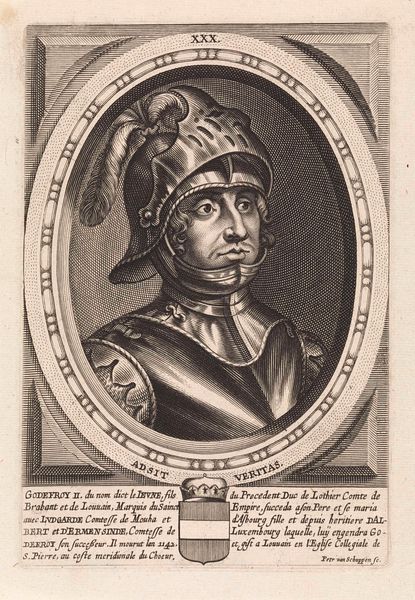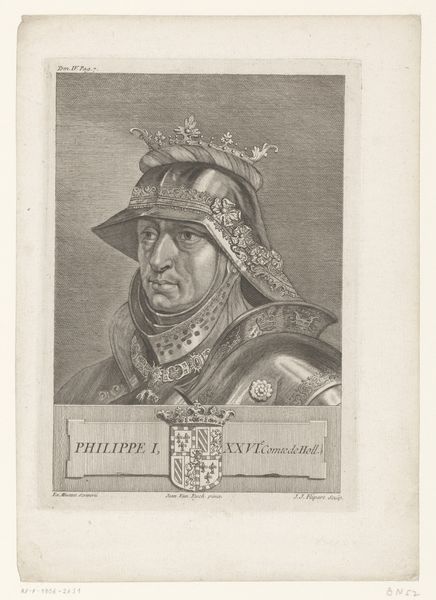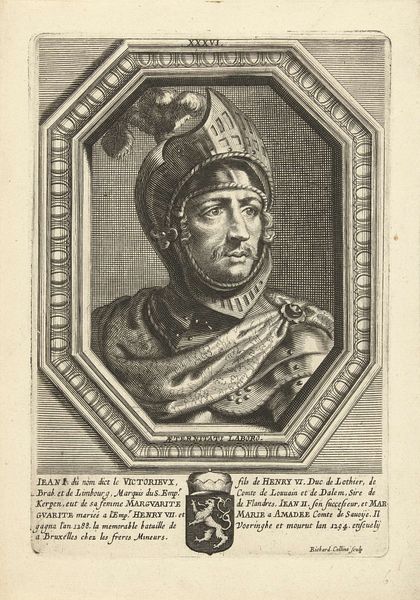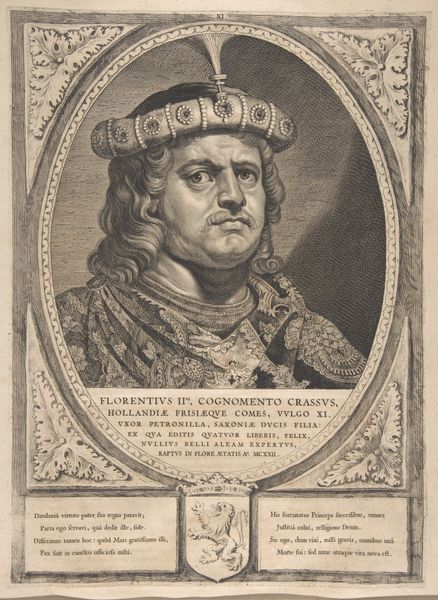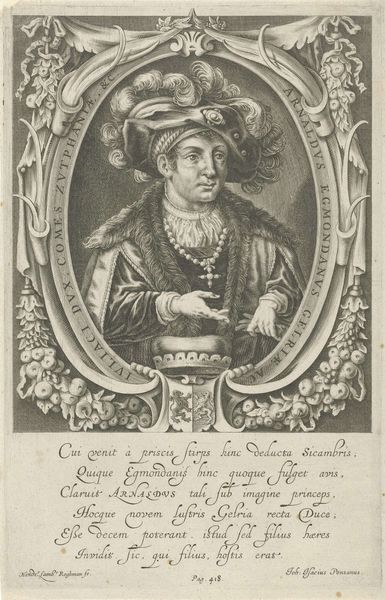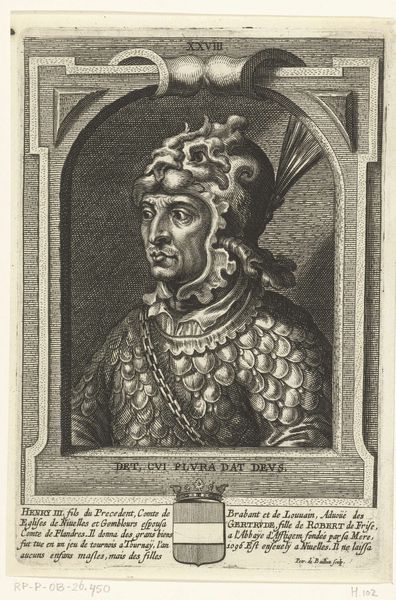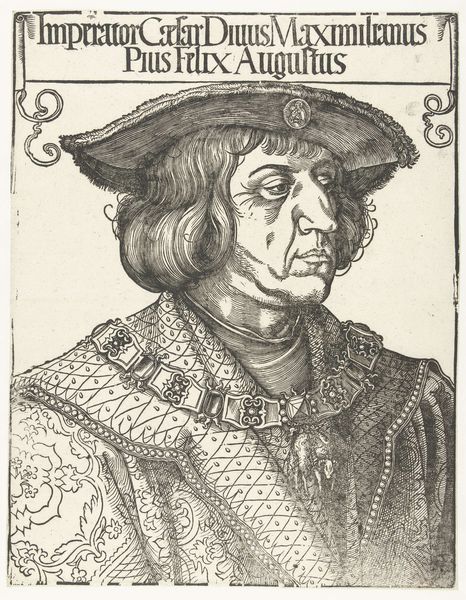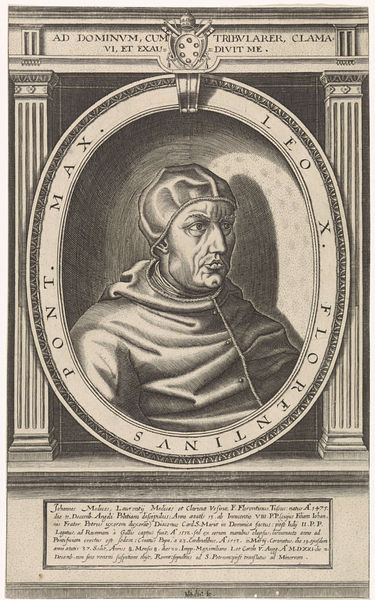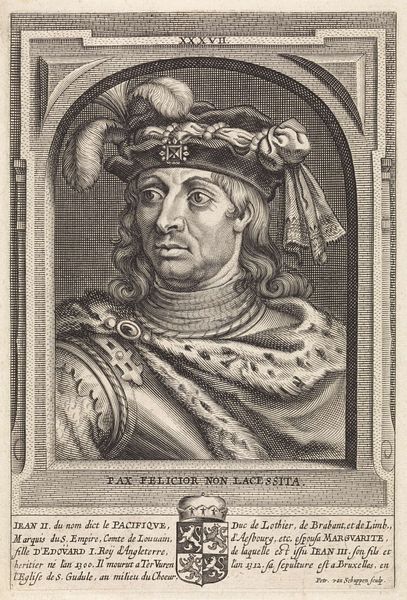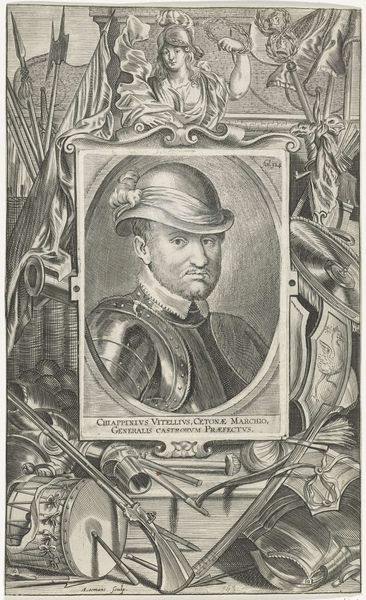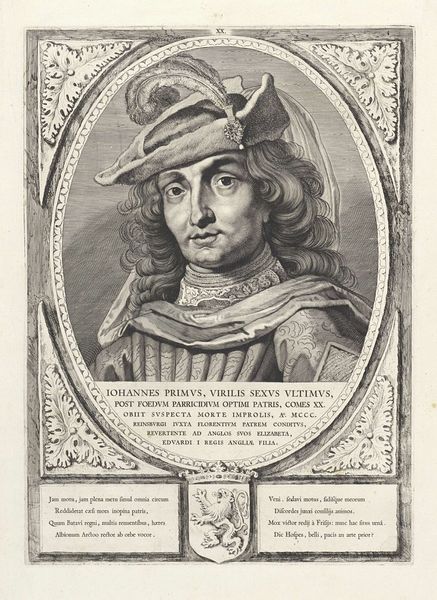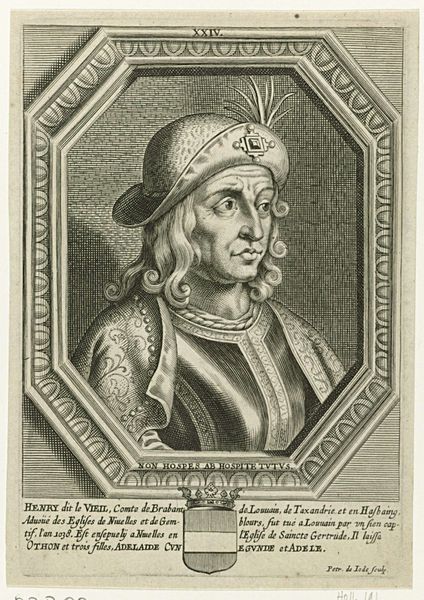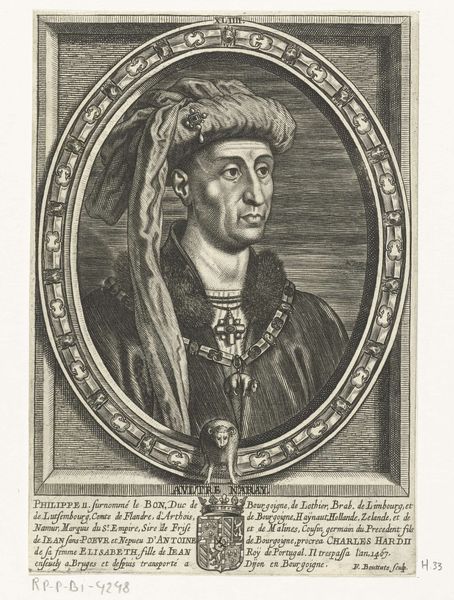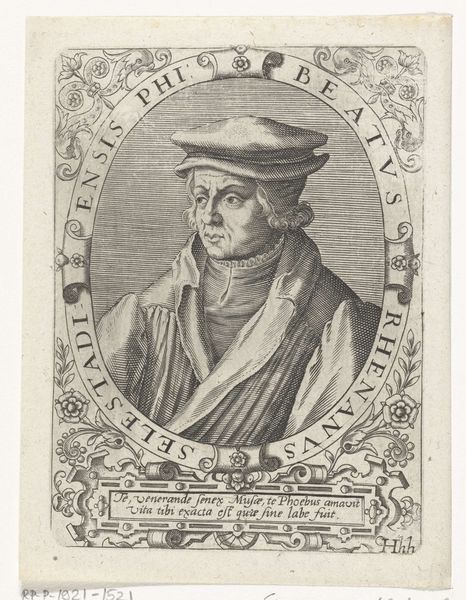
print, engraving
#
portrait
#
baroque
# print
#
history-painting
#
engraving
Dimensions: height 407 mm, width 297 mm
Copyright: Rijks Museum: Open Domain
Curator: Here we have Cornelis Visscher's "Portrait of Philip the Good, Duke of Burgundy," an engraving created around 1650 and now held in the Rijksmuseum collection. What are your initial thoughts on this piece? Editor: Well, immediately I’m struck by the starkness. It’s black and white, an engraving, lending it a formal, almost austere quality, despite the rather elaborate framing and text surrounding the portrait. It has a weighty presence. Curator: Indeed. The choice of engraving is significant. As a print, it allows for reproduction and dissemination of the Duke's image. Consider the context: Philip the Good, though long deceased, remained a potent symbol of Burgundian power. This print revives that image, solidifying his legacy and potentially serving a political function. Editor: So, not a unique object but an easily produced image? It's a powerful point about accessibility. And how fascinating to see that the tools, materials, and techniques shape not only how we view the work, but what kind of effect it has on the world. I'm particularly curious about the level of skill required to render such fine detail in an engraving. It’s practically photorealistic for its time! Curator: Absolutely. Note the use of symbolic elements: the armor denoting his martial strength and nobility, the ornate helmet suggesting power, and the inscription below further glorifying his achievements. He’s portrayed not merely as a man, but as an icon, a foundational figure. Editor: It feels deliberate, this construction of an idealized leader. But it's all created with tangible materials and labor; the paper, the ink, the engraver’s meticulous work… a true interplay of intention and the real world. I wonder about the circulation of such images, who saw them, who could afford them. Curator: Precisely, understanding the symbolic weight of imagery, coupled with the material realities of its production, offers a comprehensive view. Editor: Agreed. Thinking about the materiality of art forces a broader set of historical questions and shifts how we think about the cultural impact of Philip the Good's legacy. Thank you.
Comments
No comments
Be the first to comment and join the conversation on the ultimate creative platform.
